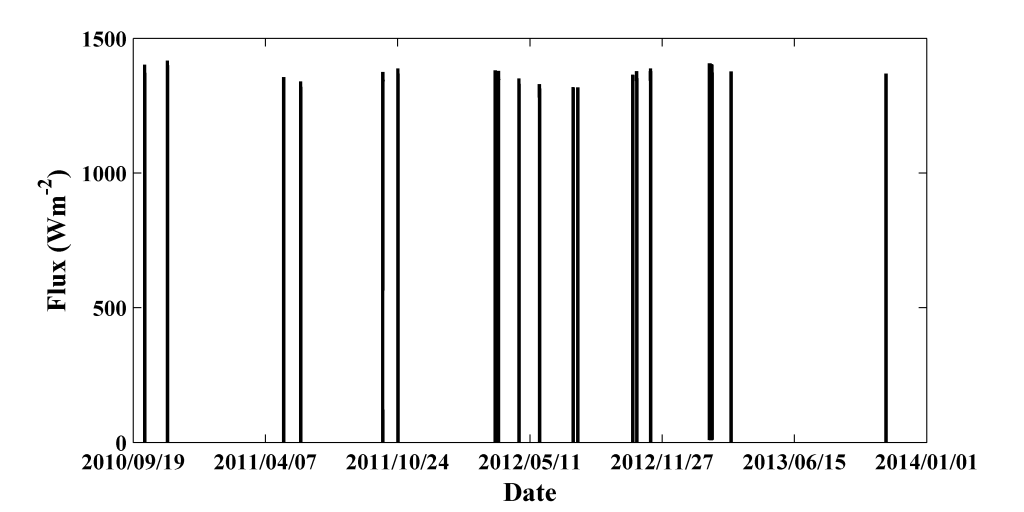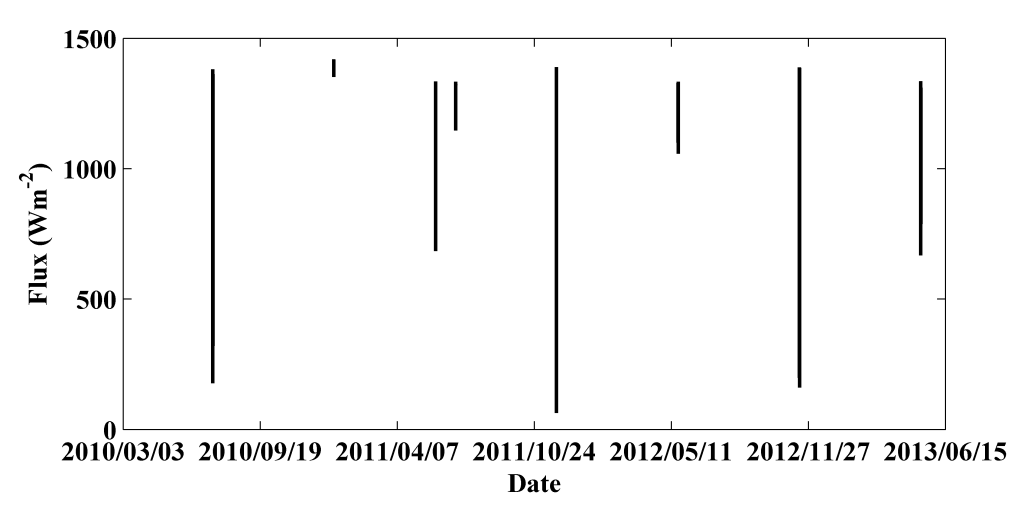Bolometeric Oscillation Sensor is working continuously since the beginning of the mission until the end of the missionary duty cycle of PICARD. The space acquired data is accessible through this site. The orbital files (distance to the Sun and footprint of satellite) as well as the full 10 seconds data are accessible through PICARD archive site.
1, The level_01 version_01 global data file: BOS_N1_v01
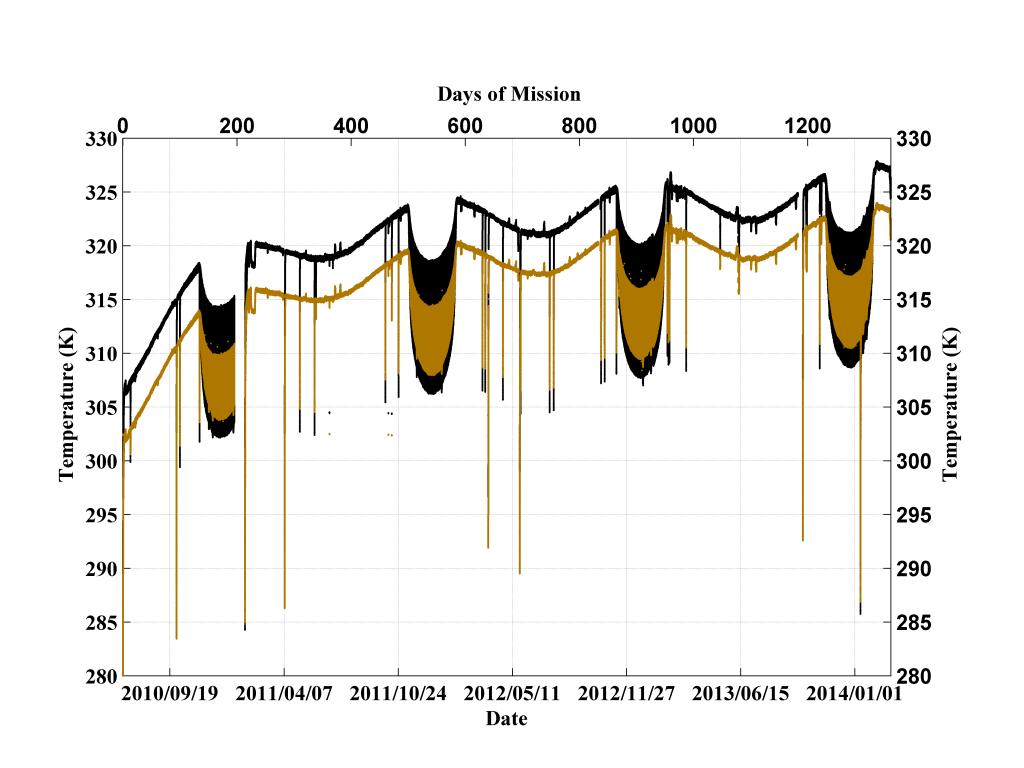
The space acquired level 0 data file is merged together and calibrated into temperature with (kelvin). The figure is plotted from level_1 version_01 data file.
2, The level_02 version_01 global data file: BOS_N2_v01
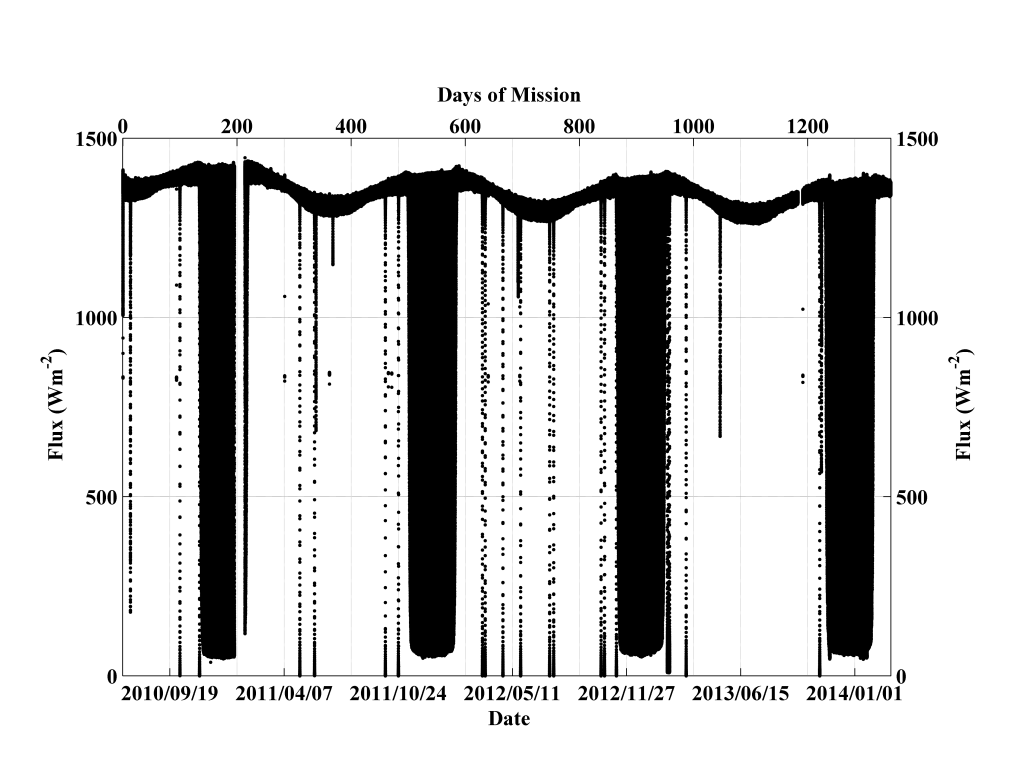
The level 2 data file is calculated based on the level 1 data set. The figure is the plot of level_2 version_01 data file.
3, Events data file MDO (Satellite was rotating along its Sun pointing axis), BOS_N1N2_MDO_v01
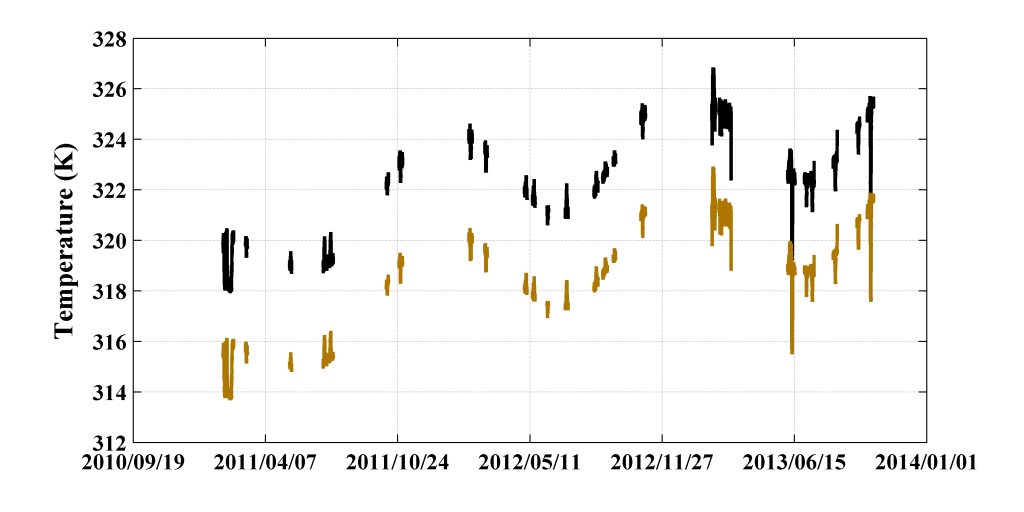
Temperature measured during the satellite rotating along its Sun pointing axis. The three long term periodical variation is a modulation by the Sun-Satellite distance change. Black (T1), Brown(T2)
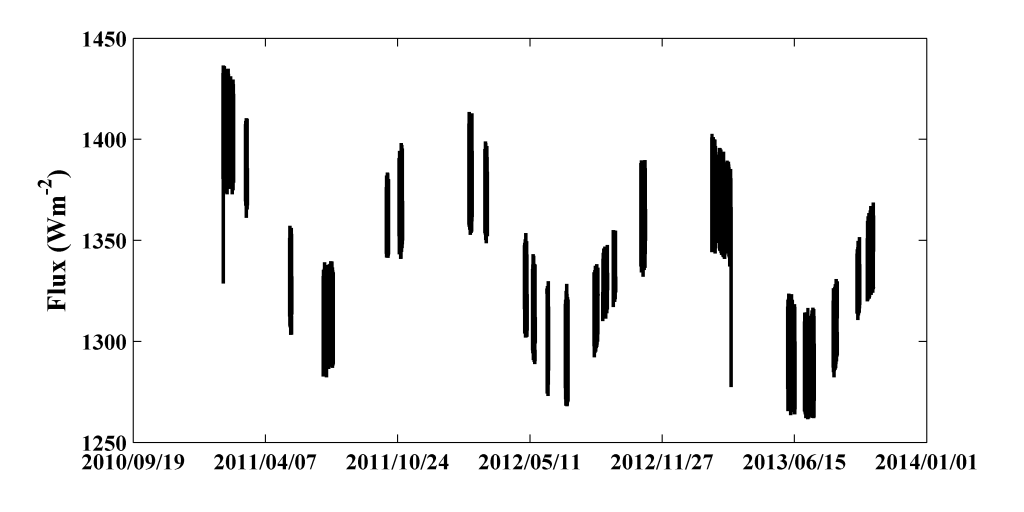
The flux is computed from two temperature measurements of BOS. The temperatures are plotted at upper figure.
4, Events data file MES (the sun pointing axis is turned to a star), BOS_N1N2_MES
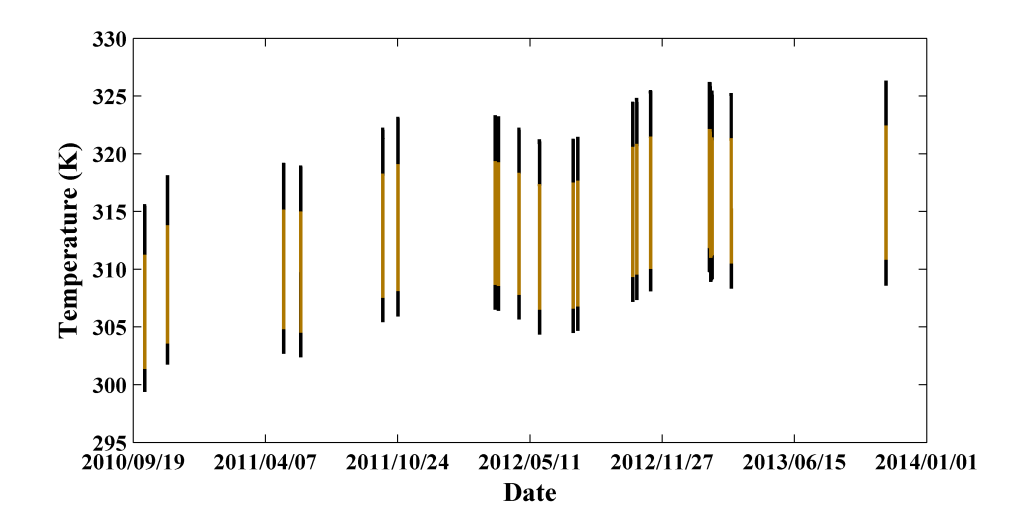
The temperature measurements during stellar pointing. It is an operation for the calibration purpose. Black solid line T1, brown solid line T1.
5, Events data file occultation, BOS_N2_Occultation
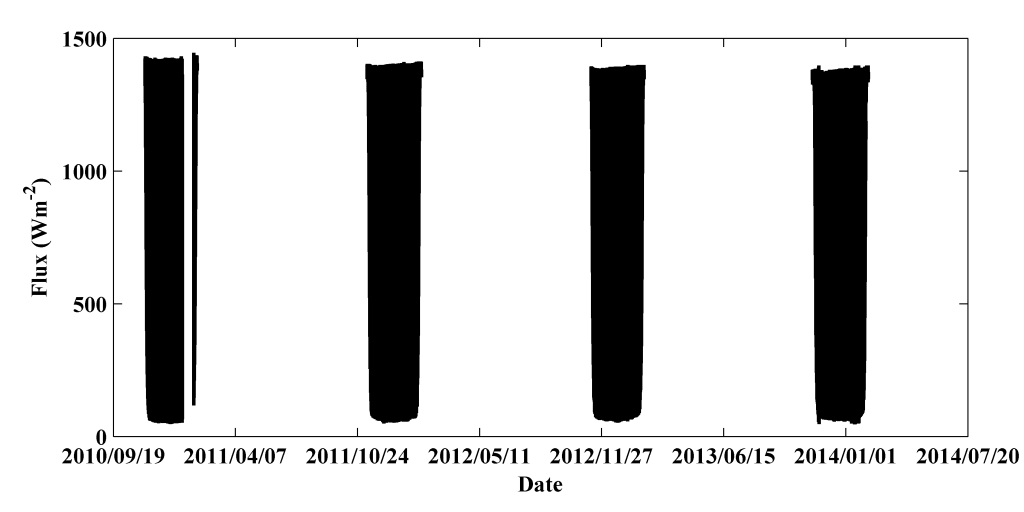
The occultation is observed during entire PICARD mission. The gaps in the first occultation is vacance of PICARD. It is induced by the false of telemetry.
6, Events data file eclipses passage, BOS_N2_Eclipse
